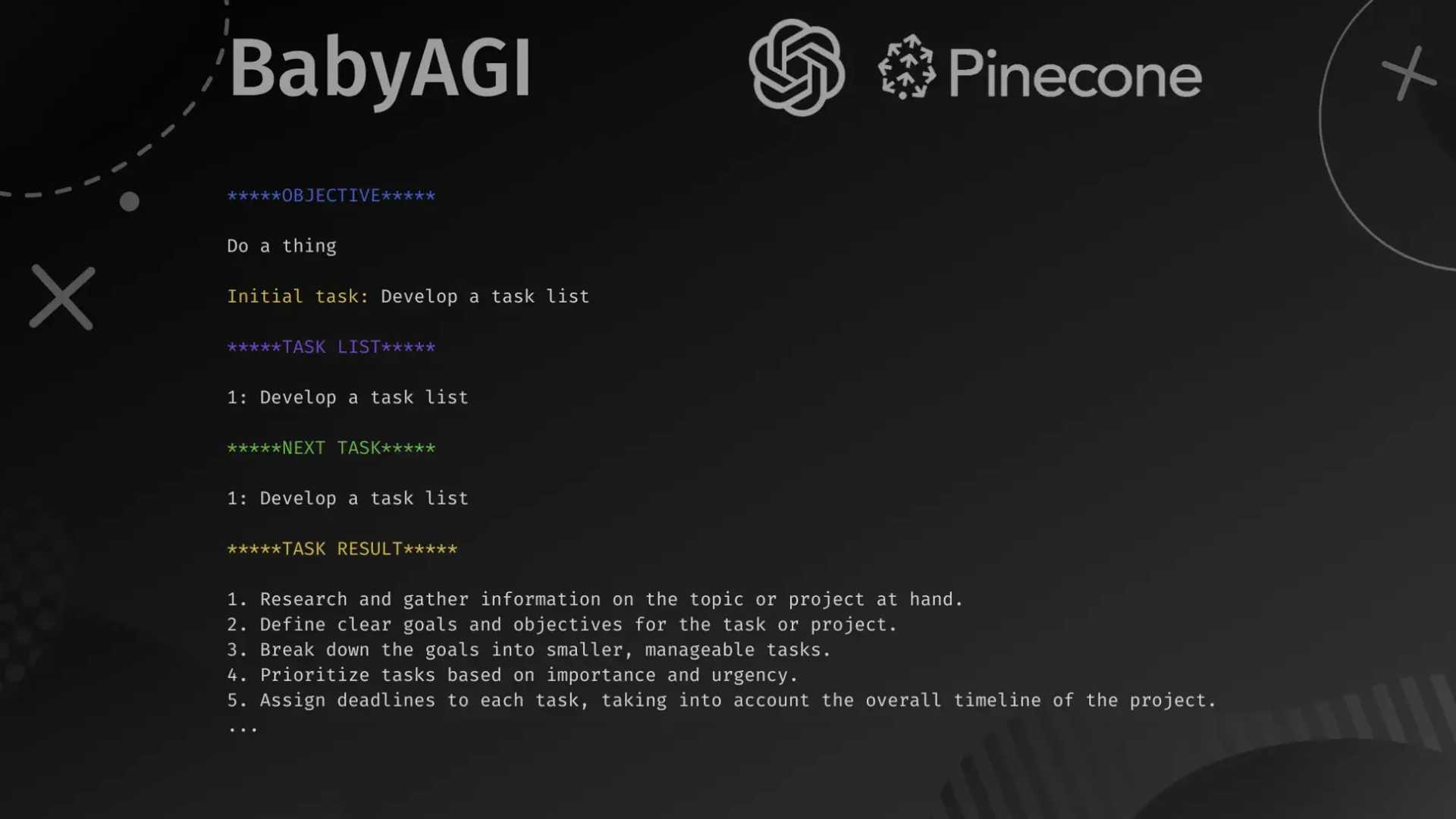BabyAGI is a Python script designed to automate brainstorming and task management. It makes use of OpenAI's GPT API and Pinecone.io to generate creative ideas, organize them into tasks, and prioritize those tasks to guide the user towards achieving their goal. In this article, we will discuss the setup and usage of BabyAGI, along with the basics of its underlying technology. By the end of this article, you will have a solid understanding of how to use BabyAGI for your own projects, as well as its potential applications and limitations.
Examples of BabyAGI in Action
To give you an idea of what BabyAGI can do, here are a few quick examples:
- Using BabyAGI to find topics for a blog
- Creating a to-do list with tasks prioritized by BabyAGI
- Brainstorming ideas for a project
Requirements for Using BabyAGI
In order to install and use BabyAGI, you will need to have the following:
- An OpenAI API account (charges based on usage)
- Python
- Git
It is important to note that your OpenAI API account charges you based on usage. Since BabyAGI loops over what it’s “thinking”, if left unsupervised for a long time it can use up more funds than you’re comfortable with. A good idea is to set usage limits in OpenAI.
Installing Python and Git
Python is a versatile programming language that’s user-friendly and widely used for AI projects, including BabyAGI. Even if you’re not familiar with it, no worries! You only need to install Python to run BabyAGI. To install it, use this short tutorial that shows how to install it for Windows/Mac or Linux.
Git is a tool that helps developers keep track of their code, collaborate with others, and handle different stages of a project. To install Git, simply follow the instructions corresponding to your operating system.
Installing BabyAGI
To install BabyAGI, you will need to:
- Download BabyAGI from Github
- Install some of its dependencies
Once you have completed these two steps, you will be ready to use BabyAGI. We also recommend using virtualenvwrapper to install BabyAGI, although this is optional. Virtualenv and virtualenvwrapper are tools used in Python to create isolated environments for your projects, helping to keep each project’s packages and dependencies separate, avoiding conflicts between them.
Configuring OpenAI and Pinecone.io
In order to use BabyAGI, you will need to configure OpenAI and Pinecone.io. OpenAI's API keys will be necessary to use the GPT API. Pinecone.io is where BabyAGI will store information as long-term memory. Once you have signed up for Pinecone.io, you will need to look in your left sidebar and click on API Keys to retrieve your PINECONE_ENVIRONMENT and PINECONE_API_KEY. BabyAGI will look for a file called .env in its directory, so you will need to save your API keys in this file for BabyAGI to access them.
Running BabyAGI
Once you have completed the setup and configuration process, you can finally run BabyAGI. To do this, navigate to your BabyAGI directory and activate your virtual environment (if you decided to use one). To run BabyAGI, use the following command:
python babyagi.py
The first run may take a bit longer as BabyAGI is also creating an index for itself in Pinecone.io, where it will store information for later use.
Conclusion
BabyAGI is an excellent tool for automating brainstorming and task management. By following the steps outlined in this article, you can easily set up and use BabyAGI for your own projects. Remember to keep in mind the potential applications and limitations of BabyAGI, and use it wisely to achieve your goals.




















